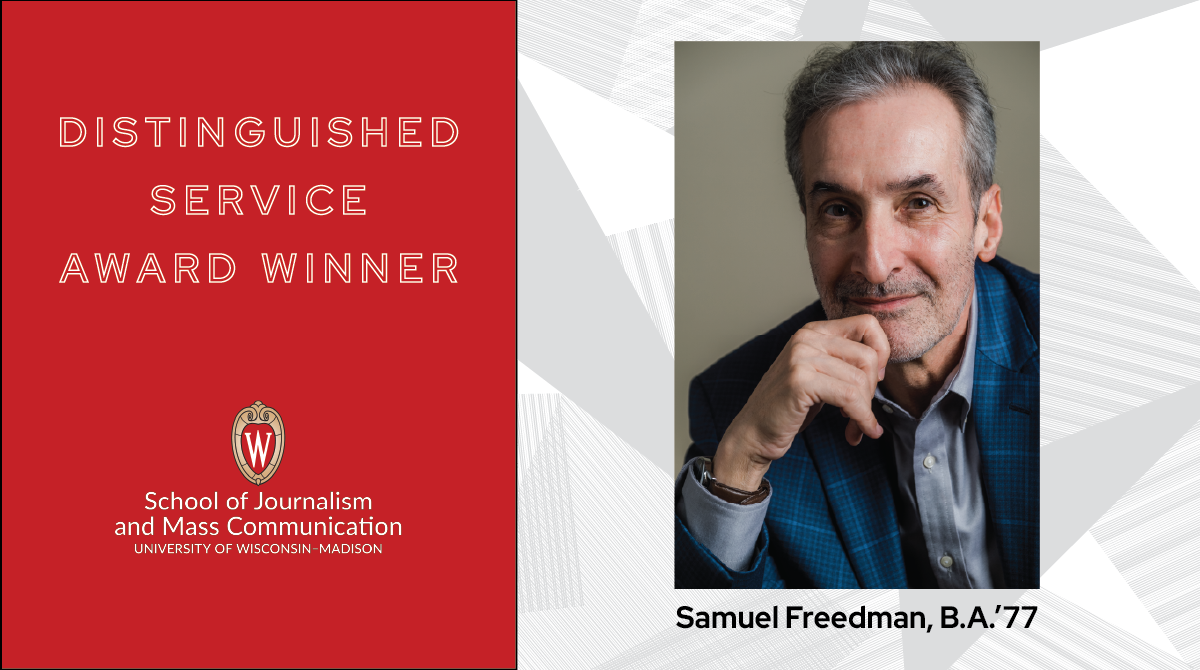 Samuel Freedman is an award-winning author, professor, and journalist. He is the author of 10 books, most recently “Into the Bright Sunshine: Young Hubert Humphrey and the Fight for Civil Rights.” His books have been finalists for the Pulitzer Prize (“The Inheritance”) and the National Book Award (“Small Victories”) and have won the Sidney Hillman Award for Book Journalism (“Into the Bright Sunshine”), the New York Pubic Library’s Helen M. Bernstein Award for Excellence in Journalism (“Upon This Rock”), and the National Jewish Book Award (“Jew vs. Jew”).
Samuel Freedman is an award-winning author, professor, and journalist. He is the author of 10 books, most recently “Into the Bright Sunshine: Young Hubert Humphrey and the Fight for Civil Rights.” His books have been finalists for the Pulitzer Prize (“The Inheritance”) and the National Book Award (“Small Victories”) and have won the Sidney Hillman Award for Book Journalism (“Into the Bright Sunshine”), the New York Pubic Library’s Helen M. Bernstein Award for Excellence in Journalism (“Upon This Rock”), and the National Jewish Book Award (“Jew vs. Jew”).
During a dozen years as a columnist on religion and education for The New York Times, Freedman won national awards in both of those fields. He also has contributed to a wide range of publications, including the New Yorker, the Atlantic, and the Washington Post, and he has co-produced two documentaries for public radio.
As a tenured professor at Columbia Journalism School, from which he will retire this June, Freedman has been named the nation’s Outstanding Journalism Educator by the Society of Professional Journalists and received Columbia University’s Presidential Award for Outstanding Teaching. His seminar in developing non-fiction books has produced more than 110 authors.
A 1977 graduate of UW-Madison with a double-major in journalism and history, Freedman remains closely involved with the the university’s Center for Journalism Ethics and its POSSE program. His wife, Christia Blomquist Freedman, is also a Badger alum, class of 1980. They met in a course nearly 49 years ago.
What does this award mean to you?
UW has been such a foundational part of my intellectual and professional lives that it’s deeply moving to be recognized by SJMC. This happens to be the year when I’m retiring from my faculty position at Columbia Journalism School, and so receiving this honor from the institution and department where my undergraduate education in journalism took place feels like the closing of a particularly meaningful circle.
What has been keeping you busy since your time in the SJMC?
Well, considering that I graduated in 1977, 48 years ago, a whole lot has kept me busy – many years at the New York Times as a reporter and then a columnist; 10 books; 35 years on the Columbia faculty; and two now-grown children and my wife. Plus keeping in close touch with many of my long-ago colleagues from the Daily Cardinal.
What are you focused on right now?
I’m just starting work on what will be my 11th book and I’m hoping to get funding to co-produce a radio documentary for the third time. And I look forward to doing weeklong residencies at SJMC each November, as I’ve done for the last several years.
What is the most valuable lesson you learned in the SJMC?
It’s impossible for me to separate what I learned in my courses from what I put into practice at the Daily Cardinal. It was all Vilas Hall to me – classroom and newsroom alike. My journalism courses showed me best practices and in the trial-and-error, inmates-running-the-asylum realm of the Daily Cardinal, especially during the political turmoil of the early and mid-70s, I had to execute those practices, however imperfectly, in a real-world way.
What is your favorite memory from the SJMC?
This may not be from SJMC specifically, but it is from Vilas Hall. One year, I got to be the Pizza Commissioner of the Daily Cardinal’s annual pizza contest. And that contest was a real big deal. The pizzerias in town would try to find out when it was taking place, so they’d send over the best pizzas they ever made. By the way, in order to protect my identity as Pizza Commissioner, I wrote the article about the contest’s results under the nom de plume of Haystacks Calhoun – who was a pro wrestler back in the day.
What was your favorite study spot on campus?
During my junior and senior years, I’d often bike from my off-campus apartment either to the Union Terrace or the Lake Wingra shoreline in Vilas Park and, weather permitting, do my reading outdoors.
Who is the SJMC professor who had the most profound impact on your career, why?
Like many other SJMC students of my era, I was both dazzled and profoundly informed by Professor Mary Ann Yodelis’s course in the law of mass communication. She gave me an incredibly valuable grounding in media law that has helped me to this day. There was also a visiting professor from Rhodes University in South Africa – I’m pretty sure Anthony Giffard was his name – who embodied the small number of incredibly brave white South Africans who stood against apartheid.